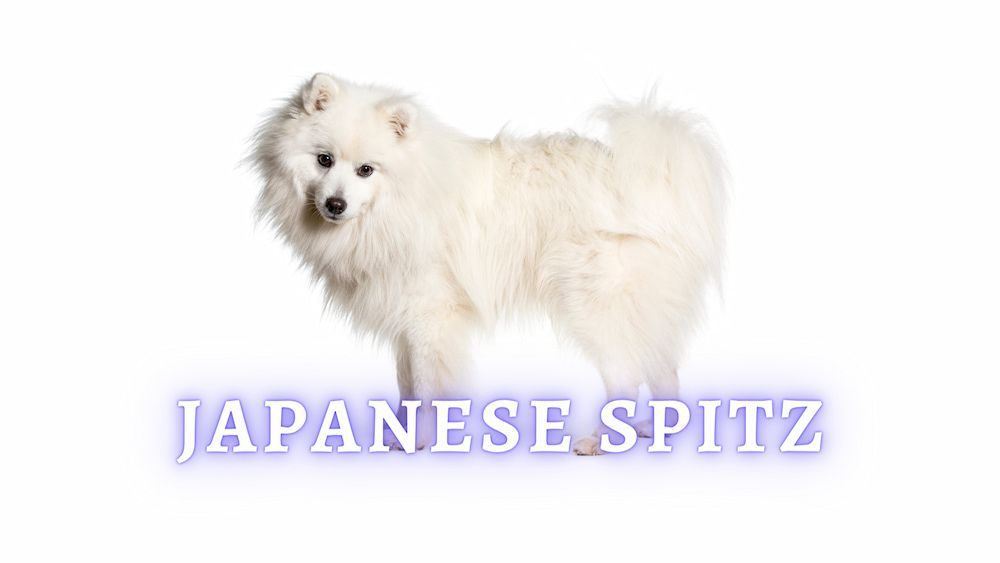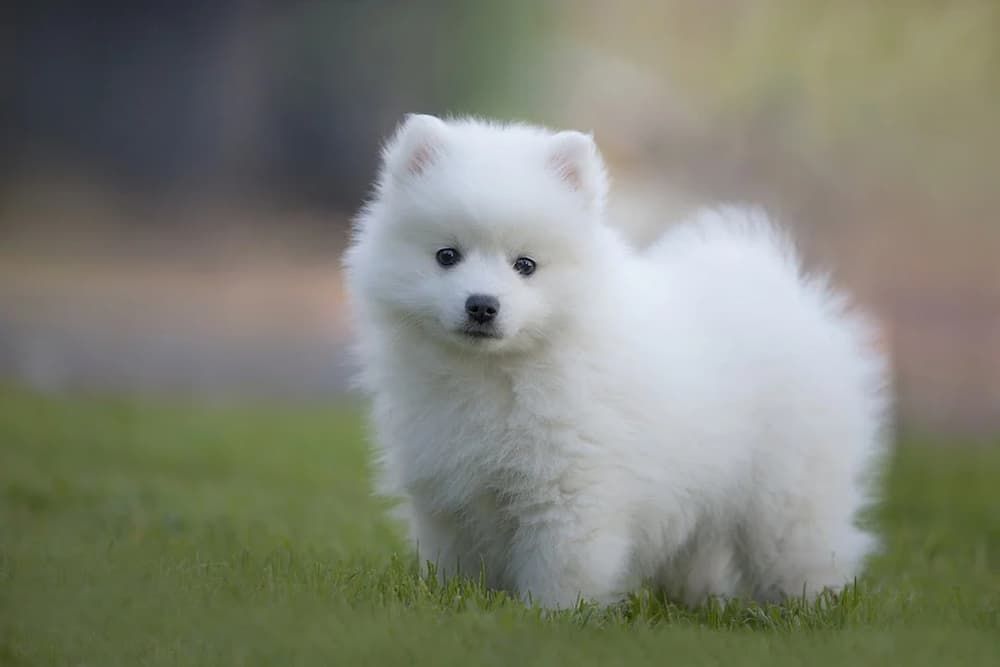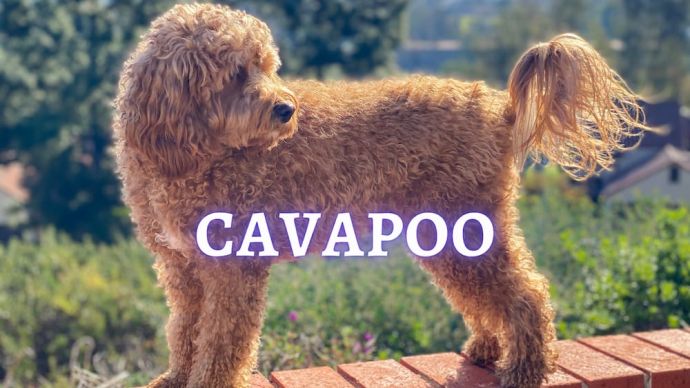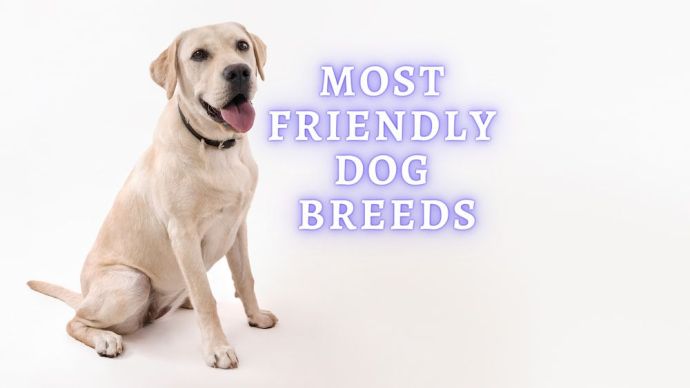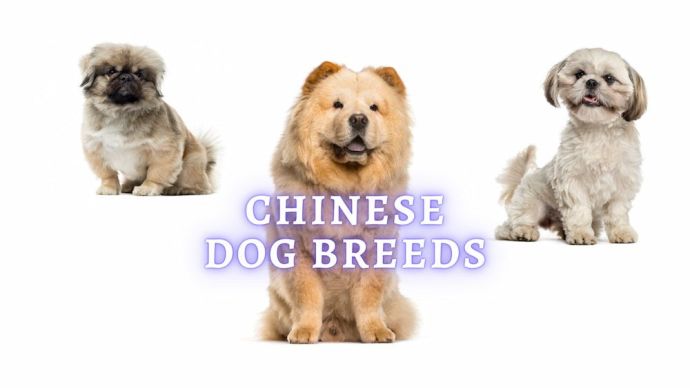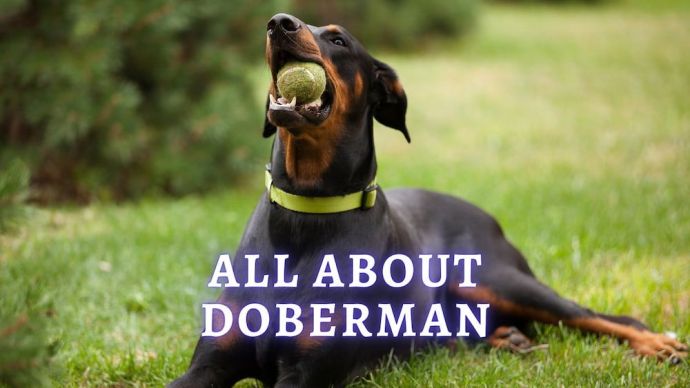Japanese Spitz: Everything about Japanese Spitz Health, Care, Puppies, and more
Written by:
Author: Vicki Smirnova
Vicki Smirnova is a professional writer and editor who adores animals and helps readers get along well with their pets. She has been working in digital media for more than 5 years and has great experience writing content about lifestyle, including pets. Vicki specializes in dog health and nutrition, cat feeding, dog training. She is an aquarium lover and is passionate to write about fish care at home. Also, Vicki headed several websites and worked as a news editor.
View all 244 articlesLearn about our editorial process and veterinary review board.
Viewed: 1163
Updated on: 08/03/2022
The Japanese Spitz is a dog breed that was developed in Japan in the 1920s. It is a Spitz-type (small to medium-sized dog), bred for companionship & also as a pet. Standards for ideal size vary across the world, but the Japanese Spitz is generally larger than the Pomeranian (its smaller cousin). The white Pomeranian, American Eskimo Dog, and Samoyed are all dogs with similar appearances to the Japanese Spitz.
Note that the Japanese Spitz dogs grow a thicker and longer mane around their neck and chest. This mane provides the Japanese Spitz a noble & unique look while also making them fluffy and adorable.
Characteristics
| Weight | 10 – 25 pounds |
| Height | 12 – 15 inches |
| Color and patterns | White is the only acceptable color for this dog, according to its breed standard (across all Kennel Clubs) |
| Lifespan | 12 – 14 years |
| Suitable for | Families with younger & older children, seniors & singles, apartments, houses with yards/without yards |
READ MORE: 16 Small White Dog Breeds
History of the Japanese Spitz
It is believed that the Japanese Spitz dog breed came from white German Spitz dogs imported to Japan from Siberia & China around 1920. Because the records were destroyed during World War II, the breed’s complete history is unclear. However, it is known that the Japanese Spitz was first exhibited in 1921 at a Tokyo show, and two white Spitz were brought from Canada in 1925. Between the mid-1920s and the mid-1930s, white spitzes, including Keeshond (the white Klein Wolfsspitz), were imported from Canada, the United States, Australia, and China. The Japanese Kennel Club established the Japanese Spitz breed standard in 1948 based on the offspring of the crossbreeding. After making its way around the globe, including India, Australia, and, of course, the United States, the Japanese Spitz was recognized by the Kennel Club of the United Kingdom in 1977.
Since the 1980s, the Japanese Spitz has been popular in the United States and is recognized by a number of Clubs, including the International Canine Federation.
Note: The American Kennel Club (AKC) does not recognize the Japanese Spitz, but the American Kennel Club’s Foundation Stock Service recognizes it as a breed.
Interesting facts
- The Japanese Spitz dog breed came from white German Spitz dogs imported to Japan from Siberia & China around 1920.
- The Keeshond (white Klein Wolfsspitz) played a significant role in the development of the Japanese Spitz.
- The American Kennel Club (AKC) does not recognize the Japanese Spitz. Instead, it is recognized by the American Kennel Club’s Foundation Stock Service.
- White is the only color available for Japanese Spitz dogs.
- There is a mane on Japanese Spitz dogs.
- It is suitable for a variety of families, including the elderly & first-time owners.
- Spitz dogs come in over 50 distinct breeds.
- The ears of Japanese Spitz dogs are folded over when they are born.
- The Japanese Spitz dogs don’t like the cold as much as other breeds of Spitz.
- The Japanese Spitz breeds are excellent apartment dogs.
- Because of their fluffy white look, the Japanese Spitz is called “Cloud Dog.”
- Agility, Flyball, & Frisbee are among the activities that the Japanese Spitz dog enjoys.
- They are a dog that thrives in a sociable environment.
- The Japanese Spitz likes seeking attention.
- The Japanese Spitz isn’t picky when it comes to food.
- This dog’s size varies depending on breed standards & country.
- The Japanese Spitz is a small white dog that features a fluffy tail and a thick white coat.
Temperament and personality
The Japanese Spitz is a lively, playful, as well as alert dog that has proven to be very adaptable to a wide range of lifestyles over time. They enjoy being a part of a family and participating in all aspects of daily life. They build close ties with their families, although they can be reserved towards strangers. They like to be part of the family & get involved in everything that happens in the household. These breeds form very strong bonds with their families, although they can be a bit reserved when they’re around strangers.
A Japanese Spitz, on the other hand, would rarely be aggressive toward strangers, preferring rather to maintain a distance. These little canines are hypersensitive to their surroundings due to their alert nature and will inform their owners as soon as a stranger comes.
The Japanese Spitz has a beautiful, pure white fluffy double coat that provides them with a great deal of protection from the weather. When viewed from above, their heads are medium in size, without being coarse and wedge-shaped. Their skull is broadest at the occiput & slightly rounded. They feature well-defined stops and a non-protruding forehead. Their muzzles are proportionate to their heads, tapering to a small, round, black nose. Lips are black, tight, & firm.
Their eyes are dark, moderate in size, oval in shape, positioned somewhat obliquely & not too wide apart, and have black rims. Ears are triangular, small, and erect. Ears are also positioned high, forward-facing, & not too wide apart. The Japanese Spitz has a powerful jaw with a regular, perfect, as well as complete scissor bite, which implies the upper teeth closely overlapping the lower ones. They have strong, arched necks as well as shoulders that are moderately sloped, with straight and strong forelegs.
The chest is wide & deep. Ribs are well sprung, and the belly is firm and tucked up moderately. Their backs are straight & short. The loins are broad & firm, with a little rise to the croup of the dog. Their tails are medium in length, plumed, and high set, which the Japanese Spitz carried curve over its back.
The Japanese Spitz boasts of well-muscled, well proportioned, and balanced hindquarters. The back legs are strong & very cat-like with well-cushioned feet as well as dark nails.
| Adaptability | 3 out of 5 |
| Adapts to apartment living | 4 out of 5 |
| Energy level | 4 out of 5 |
| Adapts to being alone | 1 out of 5 |
| Tolerates cold weather | 2 out of 5 |
| Tolerates hot weather | 3 out of 5 |
| All-Around friendliness | 3 out of 5 |
| Affectionate with family | 4 out of 5 |
| Kid-Friendly | 3 out of 5 |
| Dog friendly | 3 out of 5 |
| Cat friendly | 2 out of 5 |
| Friendly with strangers | 3 out of 5 |
| Health & Grooming | 4 out of 5 |
| Shedding | 2 out of 5 |
| Drooling | 2 out of 5 |
| Easy to groom | 3 out of 5 |
Activities
The Japanese Spitz is a lively, little dog that demands the right amount of daily exercise as well as mental stimulation – ideally 20 to 30 minutes a day with as much off the leash time as possible in a secure environment. The beauty of these dogs is that in the event that their coats become dirty, these adorable dog breeds wash like cats.
Giving a dog a shorter walk in the morning & a longer, more interesting walk in the afternoon is a good idea. Flyball, obedience, as well as agility, are among the dog sports the Japanese Spitz enjoys.
Japanese Spitz also enjoys being free to run around in the back garden to take off steam, but make sure it is supervised in a fenced yard, so it does not try to escape.
Note: The Japanese Spitz puppies should not be over-exercised because their joints & bones are still developing, and putting too much pressure on them can cause problems to the dog later in life.
Training
The Japanese Spitz is a smart dog who enjoys nothing more than pleasing people. Their training, on the other hand, must be consistent & always fair. This small companion dog, in the right hands, loves learning new things & is very quick to pick things up.
The Japanese Spitz breeds are very sensitive by nature, and as a result, they don’t respond well to heavy-handed training or harsh correction techniques, which wouldn’t yield any good outcomes. They respond well to kind, gentle, positive reinforcement training & enjoy the one-on-one connection they have with their owners during the training period, which is among the reasons these dogs thrive at many dog sports.
When Japanese Spitz puppies first arrive in their new homes, it’s all too easy to spoil them because they are cute and sweet. Therefore, rules, as well as boundaries, must be established so that a puppy is aware of what is expected of them. It also aids in establishing a pecking order & determining who is the “alpha dog,” in a household, which should be done as soon as possible.
Health concerns
The Japanese Spitz is an active as well as attractive dog breed. However, the following are some of the health issues that the breed is prone to:
Care and Grooming
A Japanese Spitz, like any other breed, needs to be groomed regularly to keep their coats and skin in good condition. They must also be given a daily exercise to ensure that they stay fit & healthy. Furthermore, dogs must be fed high-quality food that covers all of their nutritional requirements throughout their lifetimes.
Vaccinations
The breeders would have given the Japanese Spitz puppies their first vaccinations, but they would need to have their follow-up shots, which will be handled by their new owners. The puppy vaccination schedule is as follows:
- 10 to 12 weeks old, with the understanding that a puppy will not be fully protected right away but will be fully protected two weeks following their second vaccination.
It’s advisable to talk to a vet regarding boosters because there are a lot of arguments about whether or not a dog needs them after a specific period. If a dog ever had to go into a kennel, their vaccinations will have to be completely updated.
RELATED: Puppy Vaccines: What Shots do a Puppy need? Vet Advice
Spaying and neutering
Many veterinarians recommend waiting until dogs are a little older before spaying or neutering them, implying that they are more mature. As a result, they recommend neutering males and spaying females when they are 6 to 9 months old, and sometimes even when they are 12 months old.
Other veterinarians recommend spaying & neutering dogs when they are 6 months old, but never earlier than that unless medically necessary. With that said, many breeds are unique, so it’s always a good idea to consult a veterinarian and then follow their recommendations for when a dog should be neutered or spayed.
RELATED: Do Neutered Dogs Live Longer? (Explained by Vet)
Feeding
If you buy a Japanese Spitz puppy from a breeder, they’ll provide you a feeding schedule, and it’s critical to follow it, providing the same puppy food every day to prevent stomach upsets. You can adjust a puppy’s diet, but you should do so gradually to ensure that they don’t develop any digestive issues. If they do, it’s best to go back to their original diet and consult with the veterinarian before trying to change it again.
Even though older dogs aren’t known to be fussy eaters, it doesn’t mean you should offer them low-quality food. A mature dog should be fed twice a day, once in the morning & once again in the evening, with high-quality food that covers all of their nutritional needs.
It’s also critical that dogs get enough exercise to burn off any excess calories, or they risk gaining too much weight, which can lead to a variety of health problems. Obesity can cut a dog’s lifespan in half, so it’s crucial to keep an eye on their waistline from the start.
Grooming
The coats of Japanese Spitz dogs are pure white. Despite the fact that they appear to require a lot of grooming, they don’t. The coat has a texture that repels most of the dirt as well as debris. Because the coats are thick, they need to be brushed to avoid knots & matting. Ensure you brush your Japanese Spitz dog at least two times a week with a brush that reaches the undercoat. This will help remove some of the dead hair and lessen the amount of cleaning required after shedding. The coats of these dogs tend to be dry in comparison to other breeds; thus, they should be bathed as required.
Bathing too frequently can strip the hair of its natural oil and moisture, causing itching. In comparison to other breeds, the Japanese Spitz’s grooming requirements are rather moderate.
Puppies
Because Japanese Spitz puppies are noizy as well as full of life, it’s critical to puppy-proof your home and yard well before they arrive. A responsible breeder would’ve socialized their puppies very well from the beginning, resulting in more outgoing, confident, and friendly canines.
Note: consider the fact that any puppy separated from its mother and littermates may feel vulnerable. The longer a puppy can stay with its mother, the better, but not for too long.
Required things for your puppy
Before bringing a new puppy home, new owners must have some items in place. Listed below are the things required:
- High-quality puppy or baby gates that can be fitted on doors.
- A variety of well-made toys, including high-quality chews suited for pups to chew on, having in mind that a pup starts teething at age 3 – 8 months.
- Nail clippers.
- Feed as well as water bowls of good quality, preferably ceramic rather than metal or plastic.
- A slicker brush or a brush with soft bristles.
- A glove for grooming.
- A toothbrush & toothpaste specifically for dogs.
- Shampoo as well as conditioner for puppies (formulated specifically for use on canines).
- A dog collar or harness that is well-made.
- A dog bed that is well made (not too big or too small).
- A dog crate that can be used in the car as well as at home.
- Baby blankets for your puppy’s crate and beds when they want to nap or sleep at night.
Reducing the level of noise
All puppies are sensitive to noise. When a Japanese Spitz puppy arrives in the house, it’s critical to reduce the level of noise. TVs & music should not be turned up too loudly because this might stress a young puppy and cause them to become shy & timid as they grow older.
Adoption and Rescue
If you want to adopt a Japanese Spitz dog, you could have a hard time finding a rescue that specializes in this breed. However, adopting a Japanese Spitz dog is a cost-effective option. Pet adoptions are a fraction of the cost of purchasing a purebred dog from a breeder or pet store. When you adopt a Japanese Spitz dog from a shelter, you can be certain that your pet has had all required vaccinations, medical care and has been spayed or neutered if necessary. You will save some cash by doing so. Furthermore, adopting an adult Japanese Spitz dog allows you to study their behavior far more easily than trying to predict the personality of a puppy as it grows up.
Price and breeders
Buying a Japanese Spitz puppy from a reputable breeder may be more expensive, but it is the safest idea. The price of a Japanese Spitz puppy can range from $1,000 to $2,500 and higher. In the event that you get a puppy from parents that have won competitions, the price will be higher. A higher price is sometimes linked to the breeder’s reputation.
Note: Before buying a Japanese Spitz puppy, do a lot of research and make sure you’re buying from a reputable Japanese Spitz breeder. Consult a veterinarian and other pet professionals, as well as other Japanese Spitz owners, responsible Japanese Spitz breeders, and rescue organizations for information.
Conclusion
Because they are so lovely and human-oriented, Japanese Spitz is an excellent choice for first-time dog owners. They enjoy nothing more than pleasing and entertaining their families. They’re great for families with both older & younger children; however, at times, playtime can be a little boisterous.
FAQ
Is Japanese Spitz aggressive?
The Japanese Spitz is a loving as well as a friendly dog breed that is not naturally aggressive. However, they might become aggressive if they are nurtured in a harsh environment. As a result, their nature is influenced by the environment in which they were nurtured.
What does it cost to own a Japanese Spitz?
The price of a Japanese Spitz puppy can range from $1,000 to $2,500 and higher. In the event that you get a puppy from parents that have won competitions, the price will be higher. A higher price is sometimes linked to the breeder’s reputation.
Does Japanese Spitz shed a lot?
The Japanese Spitz sheds moderately rather than heavily. They shed their coat once or twice annually, depending on the climate, & it lasts about a week. The Japanese Spitz dogs will need to be brushed everyday throughout this time. They are considered to have a “blown coat” during this shedding season. Autumn and Spring are the most common times for heavy molting. They will still need to be brushed weekly for the rest of the year to avoid knots and tangles and keep their coat in good condition.
Are Japanese Spitz good family dogs?
The Japanese Spitz breeds are good family dogs. They are known to be lively and gentle with kids, as well as other dogs in the house.
Does Japanese Spitz like water?
The majority of Japanese Spitz dogs enjoy swimming and go in whenever the weather permits, especially when it is hot. However, if you have a dog that doesn’t like water, you should not force it to go in because it will only scare it.
Is the Japanese Spitz dog friendly with children?
The Japanese Spitz dogs are child-friendly. They are loving & playful with children, making them a wonderful playmate. Due to their small size, children may play rough with them, pinching their skin. As a result, close supervision is required to prevent any harsh behavior from the children or the small dog.
Article Sources:
- “Luxating Patella in Dogs.” VCA Hospitals, vcahospitals.com/know-your-pet/luxating-patella-in-dogs.
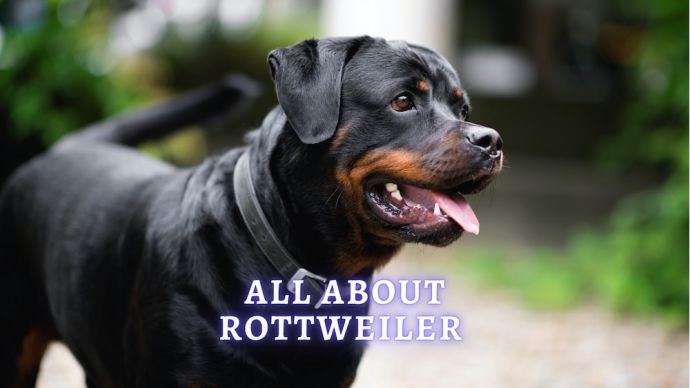 Dog Breeds Rottweiler: Rottweiler Dog Breed History, Personality and Health Care
Dog Breeds Rottweiler: Rottweiler Dog Breed History, Personality and Health Care - 149
- 0
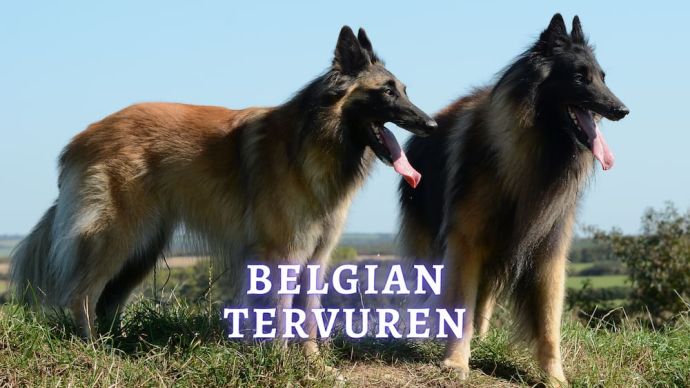 Dog Breeds Belgian Tervuren: Lifespan, Temperament and Trainability of Belgian Tervurens
Dog Breeds Belgian Tervuren: Lifespan, Temperament and Trainability of Belgian Tervurens - 262
- 0
 Dog Veterinary Tips Why is my Dog throwing up: Causes and Preventing (Veterinary Advice)
Dog Veterinary Tips Why is my Dog throwing up: Causes and Preventing (Veterinary Advice) - 23424
- 5
 Dog Care Why Is My Dog Bleeding From Its Butt? Causes and treatment of rectal bleeding in the dog
Dog Care Why Is My Dog Bleeding From Its Butt? Causes and treatment of rectal bleeding in the dog - 22075
- 0
 Dog Care My Dog Keeps Scratching His Mouth: Reasons Why Your Dog Scratching Face
Dog Care My Dog Keeps Scratching His Mouth: Reasons Why Your Dog Scratching Face - 17560
- 1









